If you want to grow healthy and tasty lettuce, you must know how to water it properly. Watering lettuce is more complex than just pouring some water into the soil. You need to consider several factors, such as the type of lettuce, the stage of growth, the weather conditions, and the soil type.
You must know the right amount of water for lettuce, based on container size, root depth, and watering method. Learn how to water lettuce with various tools like drip irrigation, soaker hose, watering can, or garden hose.
This blog post will cover everything you need about watering lettuce, from seed to harvest. We will teach you how to prevent common issues with lettuce watering. These issues include giving too much or too little water, waterlogging, and fungal diseases. By following these tips, you will be able to grow lettuce that is crisp, juicy, and disease-free.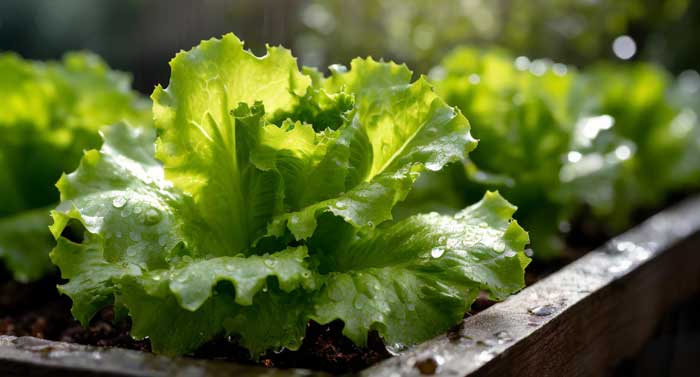
How Often to Water Lettuce
The frequency of watering lettuce depends on several factors, such as the type, stage of growth, weather conditions, and soil type.
Type of Lettuce
Different types have different water requirements. Loose-leaf lettuce requires more water compared to head-forming lettuce. This is because loose-leaf lettuce has a larger surface area, which leads to more water loss through evaporation.
You should water leaf lettuce daily or every other day, but you can water iceberg lettuce every three to four days.
Stage of Growth
Lettuce also needs different amounts of water at different stages of growth. To grow lettuce from seeds, keep the soil damp but not too wet.
This helps the seeds sprout well and prevents them from drying out. You can mist the soil lightly with a spray bottle or use a gentle stream of water from a watering can. Once the seeds have sprouted, you can reduce the frequency of watering but still keep the soil evenly moist.
When the lettuce plants have developed four to six true leaves, you can water them less often but more deeply to encourage root growth. When the lettuce plants are ready to harvest, you can water them sparingly to avoid cracking or rotting of the heads.
Weather Conditions
The weather conditions also affect how often you need to water lettuce. In hot, dry, or windy weather, lettuce plants lose more water through transpiration, and the soil dries out faster. In these conditions, you may need to water lettuce twice daily, especially if you are growing lettuce in containers.
Lettuce plants lose less water in cool, humid, or cloudy weather, and the soil retains more moisture. In these conditions, you may need to water lettuce once every few days or even less, depending on the soil type.
Soil Type
The soil type also influences how often you water lettuce. Sandy soils drain fast and hold less water than clay soils. Water lettuce more often in sandy soils than in clay soils. Clay soils are compact and waterlogged, causing root rot and fungal diseases in lettuce plants.
Therefore, the best soil for growing lettuce is well-drained, loamy soil with plenty of organic matter and a neutral pH. Adding compost, manure, or other organic amendments can improve your soil’s drainage and water retention.
As a rule of thumb, you should water lettuce when the top inch of the soil feels dry to the touch. You can also use a moisture meter to measure the soil’s moisture level to determine when to water lettuce. A moisture meter has a probe that you insert into the soil and a scale showing if the soil is dry, moist, or wet. You can find moisture meters at most garden centers or online.
How Much Water to Give to Lettuce
The amount of water for lettuce depends on container size, root depth, and watering method.
- Size of the container: When growing lettuce in containers, you must water it more than when growing in the ground. Containers have less space and dry out quickly. The size of the container also affects how much water to give to lettuce. The larger the container, the more water it can hold, and the less often you need to water lettuce.
- However, you should also avoid using containers too large for your lettuce plants, as this can lead to waterlogging and root rot. For each lettuce plant, use containers that are at least 6 inches deep and 12 inches wide. If you are growing multiple plants in one container, use larger containers.
- Depth of the roots: The depth of the roots also determines how much water to give to lettuce. Lettuce has shallow roots, meaning they do not reach exceedingly deep into the soil and can easily dry out or drown. Therefore, you should water lettuce deeply, but not too deeply, to ensure that the roots get enough water, but not too much.
- A good rule of thumb is to water lettuce until the water drains out of the bottom of the container or until the soil is moist to a depth of 6 inches if you are growing lettuce in the ground. You can use a trowel, a spade, or your finger to check the soil moisture depth.
- Method of watering: The method of watering also affects how much water is given to lettuce. There are different ways to water lettuce, such as drip irrigation, soaker hose, watering can, or garden hose. Each method has advantages and disadvantages, depending on the size and location of your lettuce garden and preference.
What are the Benefits and Drawbacks of Various Watering Techniques for Growing Lettuce Plants
- Drip irrigation: This system sends water to plant roots using tubes, pipes, valves, and emitters. Drip irrigation saves water when watering lettuce by reducing evaporation, runoff, and weed growth.
- You can decide how much water to use, and how often, and add fertilizers or pesticides to the water if needed.
- Drip irrigation is costly and complex to set up and maintain. It may also get blocked or leak if not inspected often.
- Soaker hose: A soaker hose is a porous hose that seeps water slowly along its length, creating a wet strip of soil around the plants. A soaker hose is similar to drip irrigation but simpler and cheaper to set up and use.
- It also reduces evaporation, runoff, and weed growth, allowing you to water lettuce evenly and deeply.
- A soaker hose can clog or leak. Adjusting water pressure and flow can be difficult. This difficulty is based on the hose’s length and diameter.
- Watering can: A watering can is a container with a spout and a handle that you fill with water and pour over the plants. A watering can is the simplest and cheapest lettuce method, as it does not require any equipment or installation.
- It helps you have better control and accuracy in watering lettuce. It lets you water lettuce gently and carefully without harming the leaves or splashing the soil.
- Watering can be time-consuming and labor-intensive, especially for big or spread-out lettuce gardens. It can also waste water if you overwater or spill it.
- Garden hose: A garden hose is a flexible tube. It connects to a faucet or pump. It brings water to plants. It uses a nozzle or sprinkler.
- A garden hose is a handy way to water lettuce. It can water lettuce fast and cover a big or small area, depending on the sprinkler nozzle.
- Using excessive water or pressure from a garden hose can harm the soil, and lettuce plants, and cause erosion or compaction.
How to Water Lettuce
How you water lettuce is as important as how often and how much you water lettuce. Here are some tips on how to water lettuce properly to ensure optimal growth and quality:
Water Lettuce in the Morning
- The best time to water lettuce is in the morning when the temperature is more relaxed and the sun is less intense. This allows the water to soak into the soil and reach the roots before it evaporates or runs off.
- It also gives the lettuce plants enough time to dry off before the night falls, which reduces the risk of fungal diseases and pests. Don’t water lettuce in the afternoon or evening.
- Avoid watering lettuce in the afternoon or evening. This can lead to the leaves burning or wilting. Additionally, it can keep the soil wet and cold, which may cause the roots to rot or freeze.
Watering Lettuce at the Base
- The best place to water lettuce is at the base of the plant, where the stem meets the soil. This ensures that the water reaches the roots and not the leaves. This prevents the water from splashing the soil and spreading diseases or from wetting the leaves and causing them to rot or burn.
- Don’t water lettuce from above or with a strong spray, as it can harm or move the plants.
Water Lettuce Evenly
To water lettuce properly, make sure the soil and roots are moist but not too wet by watering evenly. This ensures that the lettuce plants get enough water, not too much, and do not suffer from drought or water stress.
To prevent uneven growth or issues such as bolting, tip burn, or bitter taste, it is important to water lettuce evenly. Additionally, it is crucial to avoid creating dry or wet spots in the soil.
Water Lettuce with Clean Water
The best water for watering lettuce is clean water free of contaminants, chemicals, or pathogens. This ensures that the water does not harm the lettuce plants or affect their quality or flavor.
Avoid watering lettuce with dirty water, such as water from ponds, streams, or rain barrels, as this can introduce diseases, pests, or pollutants to the lettuce plants. If you have to use water from these sources, filter, boil, or treat it before using it.
How to Avoid Problems Related to Watering Lettuce
Watering lettuce can help you avoid many common problems related to watering lettuce, such as overwatering, underwatering, waterlogging, and fungal diseases.
However, these problems can sometimes occur due to factors beyond your control, such as extreme weather, pests, or diseases.
Here are some signs, causes, and solutions for these problems:
- Overwatering: Overwatering is when you give too much water to lettuce or water it too frequently, resulting in waterlogged soil and drowned roots. Signs of overwatering include yellowing, wilting, or dropping of leaves, soft or mushy stems, root rot, or mold growth.
- Causes of overwatering include poor drainage, heavy rainfall, or excessive irrigation.
- Solutions for overwatering include improving drainage, reducing the frequency or amount of watering, or transplanting the lettuce plants to a drier location.
- Underwatering: Underwatering is when you give too little water to lettuce or water it too infrequently, resulting in dry soil and dehydrated roots. Signs of underwatering include browning, curling, or crisping of leaves, stunted or slow growth, bolting, or bitter taste.
- Causes of underwatering include drought, high temperature, or low humidity.
- Solutions for underwatering include increasing the frequency or amount of watering, mulching the soil, or shading the lettuce plants from direct sun.
- Waterlogging: Waterlogging is when the soil becomes saturated with water, and the air spaces are filled with water, preventing the roots from breathing. Signs of waterlogging include wilting, yellowing, or dropping of leaves, root rot, or fungal diseases.
- Causes of waterlogging include poor drainage, heavy rainfall, or overwatering.
- Solutions for waterlogging include improving the drainage, adding organic matter to the soil, or raising the beds or containers.
- Fungal diseases: Fungal diseases are diseases caused by fungi, which thrive in moist and humid conditions and infect the lettuce plants through the soil or the leaves. Signs of fungal diseases include spots, patches, or lesions on the leaves, stems, or roots, mold growth, or decay.
- Causes of fungal diseases include waterlogging, overwatering, or splashing of soil.
- Solutions for fungal diseases include watering at the base, avoiding wetting the leaves, or applying fungicides or organic remedies.
Conclusion
Watering lettuce is one of the most important aspects of growing lettuce, as it affects the growth, quality, and flavor of the lettuce plants.
By following these tips on how often, how much, and how to water lettuce, you can grow crisp, juicy, and disease-free.
Please remember to water lettuce in the morning, at the base, evenly, and with clean water, and to avoid overwatering, underwatering, waterlogging, and fungal diseases.
Happy gardening!
I am Gaushoul Agam
𝐂𝐨-𝐅𝐨𝐮𝐧𝐝𝐞𝐫 & 𝐂𝐄𝐎
ToAgriculture
I am an experienced Horticulture Officer in the Department of Agricultural Extension in Bangladesh. I am committed to improving agriculture and farming.
I created ToAgriculture to address global food safety concerns. These concerns are caused by a growing population, diminishing farmland, and the impact of climate change on agriculture. I assist readers in learning modern farming techniques.
I also help them control pests and diseases. Additionally, I guide managing agriculture sustainably. All of this is aimed at creating a better and more successful future in farming.
I have experience in field crops and horticulture crops. I know about fruit and vegetable farming, managing pests and diseases, irrigation, and grafting. Come with me as I share my knowledge and experiences to help you create a better future.
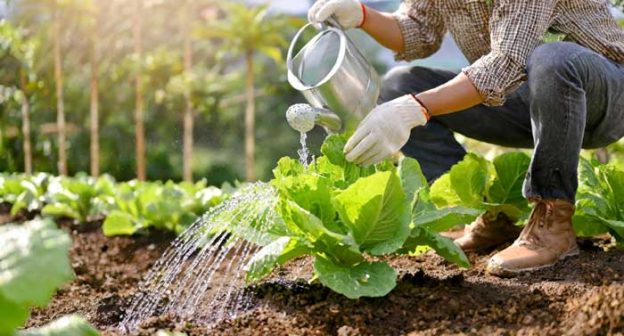
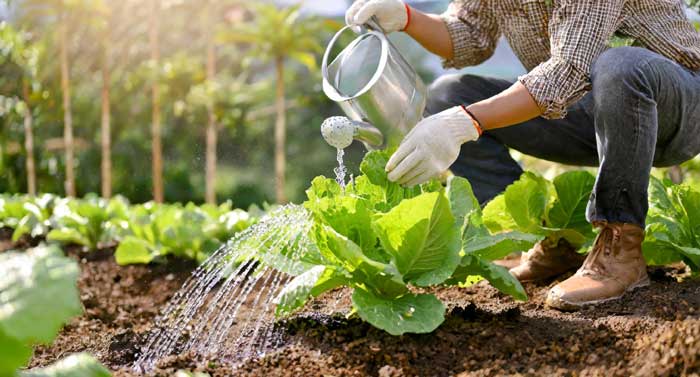

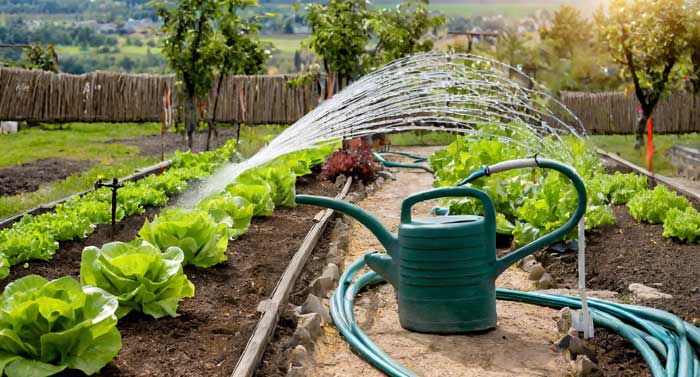
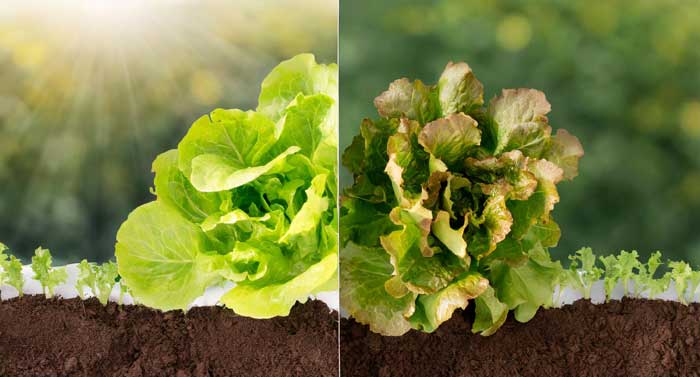
Pingback: All About Bibb Lettuce: Benefits, Growing & Dishes - ToAgriculture